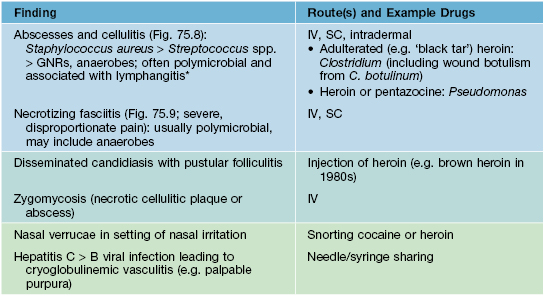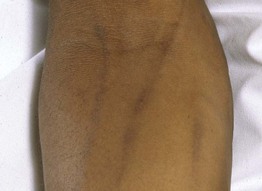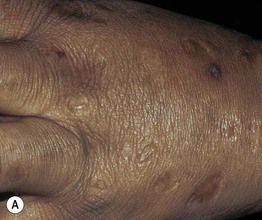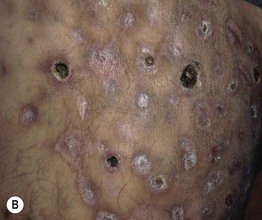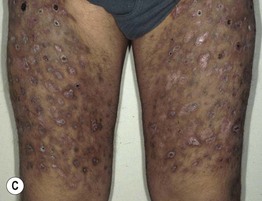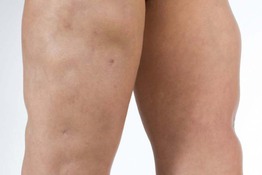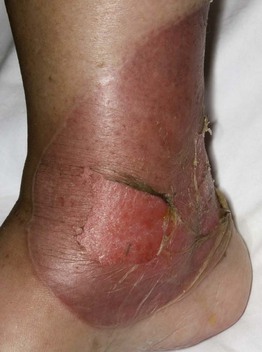75
Cutaneous Signs of Drug, Child, and Elder Abuse
Drug Abuse
• The skin often displays evidence of injection and inhalation drug abuse.
• A broad spectrum of cutaneous findings can result from local and systemic effects of the drug itself, adulterants, or associated infectious agents (Tables 75.1 and 75.2; Figs. 75.1–75.9).
Table 75.1
Mucocutaneous signs of drug abuse.
Infections associated with drug abuse are presented in Table 75.2. A variety of cutaneous drug reactions can also develop, such as morbilliform or fixed drug eruptions, urticaria, small vessel vasculitis, and Stevens–Johnson syndrome/toxic epidermal necrolysis.
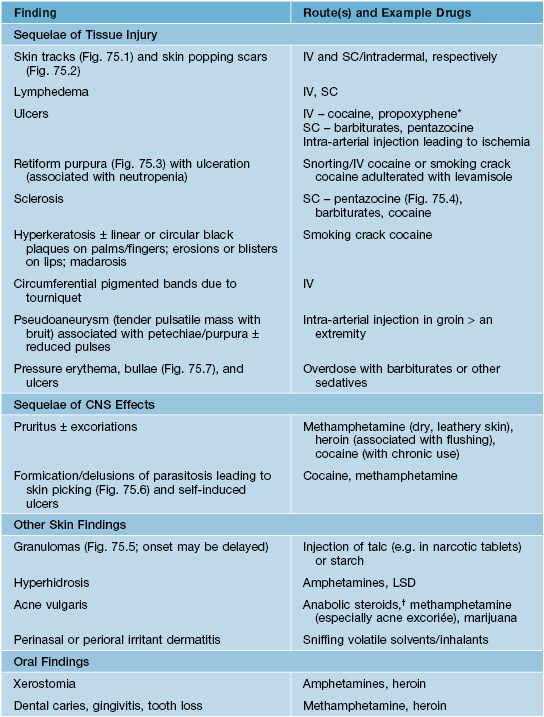
* Withdrawn from prescription drug market in 2010 in the United States and Europe.
† May also be associated with androgenetic alopecia, hirsutism, clitoral enlargement, testicular atrophy, and gynecomastia.
IV, intravenous; LSD, lysergic acid diethylamide; SC, subcutaneous.
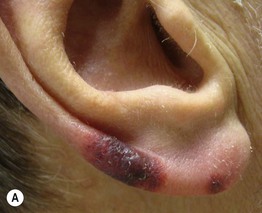
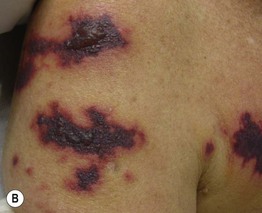
Fig. 75.3 Retiform purpura due to levamisole-adulterated cocaine. A, B The earlobe is a common site of involvement and purpuric lesions of the earlobe had been described previously as a side effect of levamisole. At the time of writing, up to 70% of the cocaine in the United States contained levamisole, compared to <3% of the heroin. Courtesy, Jeffrey Callen, MD.

